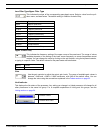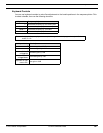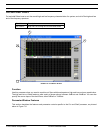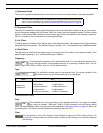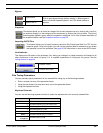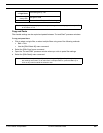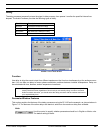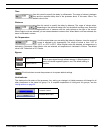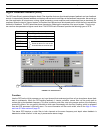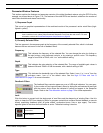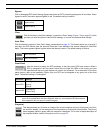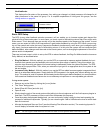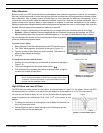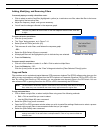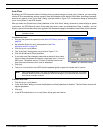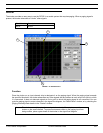
© 2003 Shure Incorporated DFR22 Software Guide 66
Digital Feedback Reducer (DFR)
Digital Feedback Reducer (DFR)
The DFR uses Shure's patented Adaptive Notch Filter algorithm that can discriminate between feedback and non-feedback
sounds. It automatically detects feedback and deploys narrow-band notch filters at the feedback frequencies. No sound sys-
tem (the combination of microphones, mixing, signal processing, power amplifiers and loudspeakers) has an absolutely flat
response. When the level of a sound system is increased, the frequencies at which peaks occur will be the first to exceed the
threshold of feedback. The DFR attenuates these frequencies, flattening the response of the sound system. Thus the sys-
tem can then be operated at a higher overall level. The DFR22 Audio Processor provides the following types of DFR:
Function
Use the DFR as the initial processor on any input channel that receives signal from a live microphone where feed-
back is problematic. When the DFR detects feedback, it inserts a shallow, narrow filter into the audio path to
reduce gain at the feedback frequency. This filter is called a notch filter, due to the narrow section of the frequency
spectrum it affects. You can specify the width at which new filters deploy with the filter Q setting, which is accessed
from the DFR processor’s [Options] menu. For more information on filter notch width, refer to the High Q Filters
and Low Q Filters section on page 70
The stereo DFR deploys a notch filter to both channels at the same frequency and depth when feedback is
detected on either channel. In this way it preserves the stereo image.
Block Name Description
DFR5 5 Band Digital Feedback Reducer
DFR10 10 Band Digital Feedback Reducer
DFR16 16 Band Digital Feedback Reducer
ST DFR5
Same as above: for use on two
channels that are a stereo pair.
ST DFR10
ST DFR16
1
FIGURE 7-10: DFR10 Window
2



